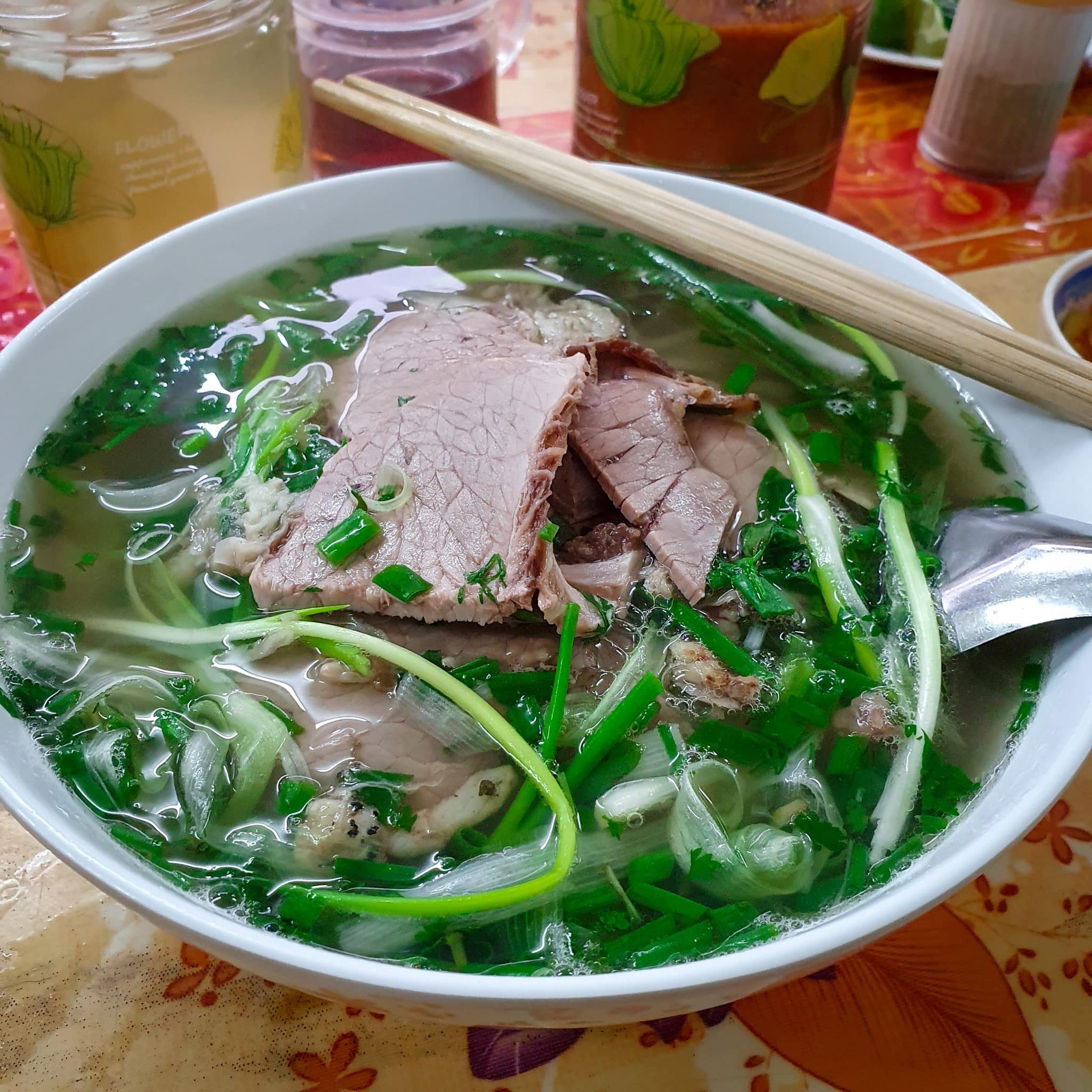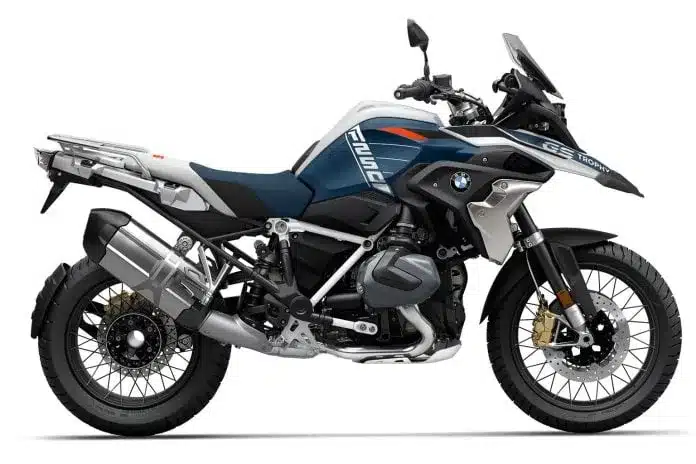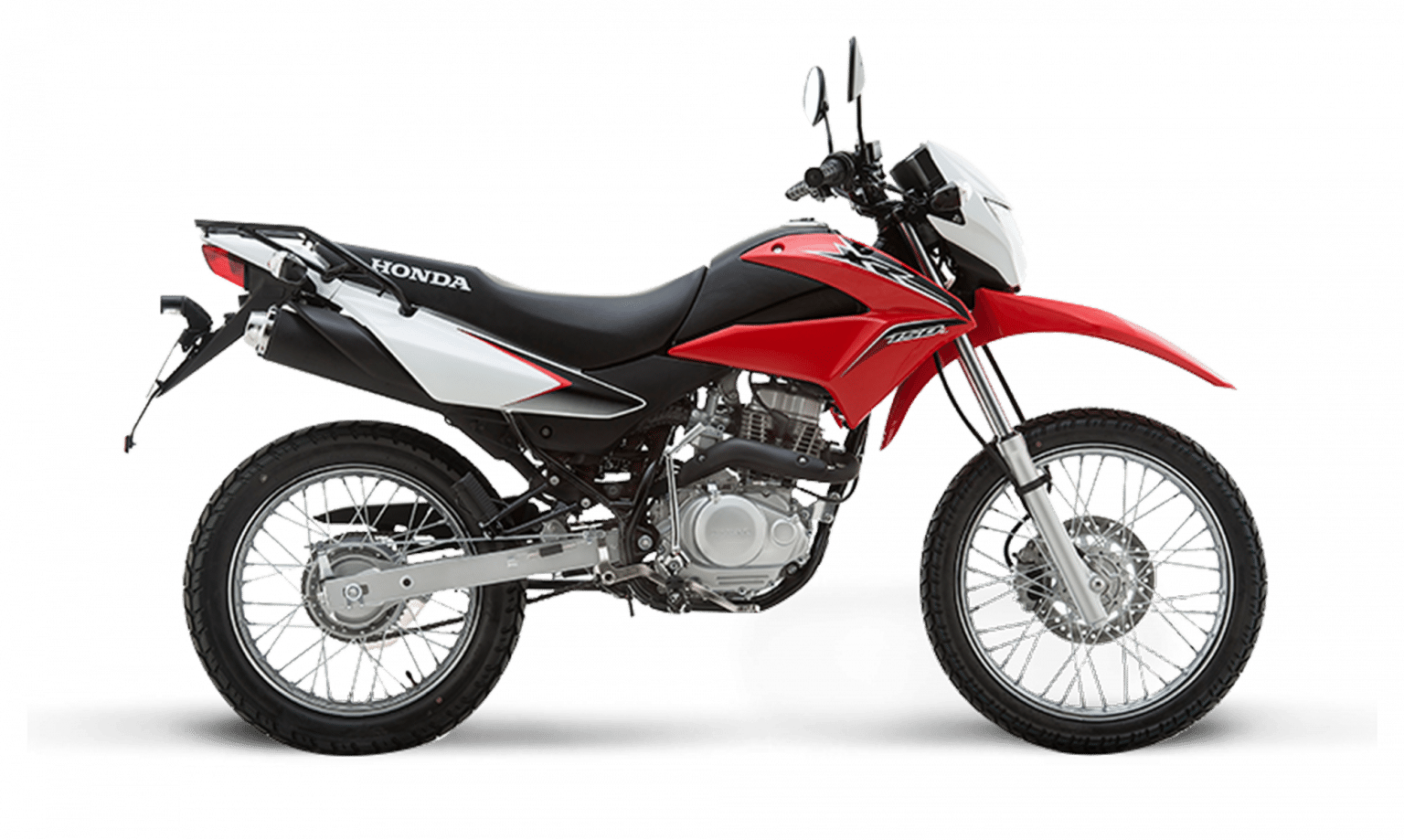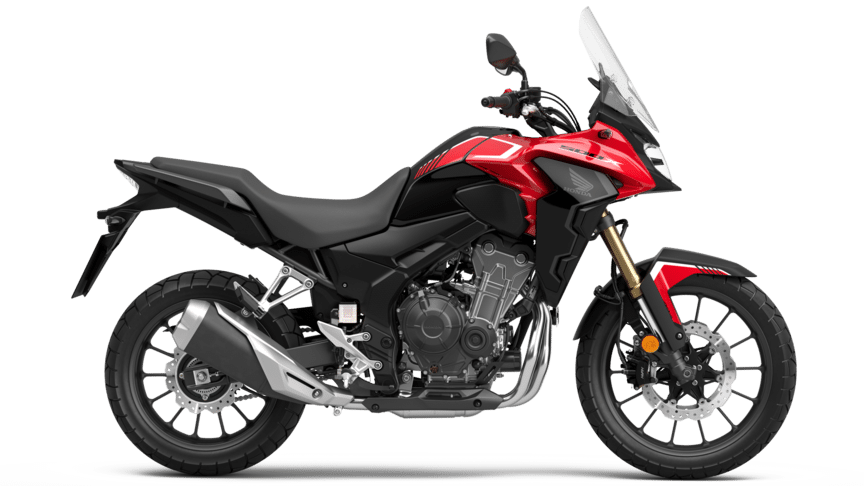Pho: Vietnam's Favourite Meal
Vietnam has one of the most distinct yet diverse food scenes of any nation on the planet, and pho is the most iconic Vietnamese food there is. The dish is arguably a microcosm of what Vietnamese cuisine is known for in general: a bunch of fresh ingredients brought together in a way that is texturally interesting, extremely healthy, and subtle yet complex in terms of flavor.
No matter where your motorbike adventures take you in Vietnam, you’ll find restaurants or food stands serving pho nearby. Different regions in Vietnam make different variations of pho, but the broth and noodle-based dish is one of the most popular types of Vietnamese food no matter where you go. Because pho is so ubiquitous in Vietnam and also because it is a great food for motorbike travelers, it’s important you learn more about the dish! Where it came from, what’s in it, how to eat pho properly, why it’s so good for you, and any other questions you may have are all answered in this guide to pho.

A History of Pho
Before getting into what makes pho so good, let’s look at where it comes from.
Where and when was pho invented?
The original version of pho was invented in the North Vietnam province of Nam Dinh around 1890. It was much simpler than today’s pho, with the broth being a simple mixture of water, fish sauce, salt, and a few spices like ginger and MSG. The simple broth was poured over a bed of flat rice noodles to create a noodle soup that was extremely inexpensive.
How has pho changed over the years?
Before long, Nam Dinh’s pho spread to Hanoi, the nearby city that was serving as the “home base” for the French occupying Vietnam. And when it hit the big city market, pho really began to take off towards the Hanoi street food staple it is today.
The first innovation that created the now-traditional Vietnamese pho was the addition of beef bone broth. The French demanded more beef to be raised in Vietnam so that they could use the meat in their cuisine. The bones were generally left unused, though, and that meant there were a ton of leftovers to be used by vendors making pho. They would boil the beef bones in the broth for hours to infuse it with a savory flavor.
The second big pho innovation that has been introduced over the years is the addition of many herbs and spices during cooking. Green onions, star anise, cinnamon, cloves, black cardamom and coriander are often added and boiled along with the beef bones to create a more complex flavor.
Regional variations of pho
Pho is the most common dish in every part of Vietnam nowadays, but, like with a lot of Vietnamese food, the North and South of the country have very different takes on the dish. Hanoi Native Ho Anh Thu, who has lived in both Hanoi and Saigon, explains the three key differences between Northern and Southern pho:
- The sweetness of the dish. In the North, savory Vietnamese dishes like pho never have sugar added. Instead, Northern pho includes a bit more MSG. This gives Hanoi pho a saltier flavor.
- The noodles. In the north, rice noodles are always cut in a uniform shape to make pho. That is, every bowl of pho you get there will contain flat noodles, something like what you might be familiar with from Pad Thai. Southern pho vendors are more blase about their noodles, sometimes including unevenly cut or even round noodles.
- The add-ons. In the north, pho is usually served with quay, a long strip of fried wheat flour (picture a churro but with a light dusting of salt instead of cinnamon sugar) on the side. In the north, pho is served with a heaping basket of fresh herbs and vegetables like bean sprouts, mustard leaf, fish lettuce, and Vietnamese mint. Southern pho vendors also include a variety of sauces at the table, including hoisin sauce, chili sauce, pickled garlic in water, and limes so you can squeeze fresh lime juice into the pho.
As a rule, the “noodle soup” recipes from Northern Vietnamese cuisine tend to have lighter, more elegant flavors using fish sauce as the main flavor agent, and the flavors tend to grow bolder as you travel South.
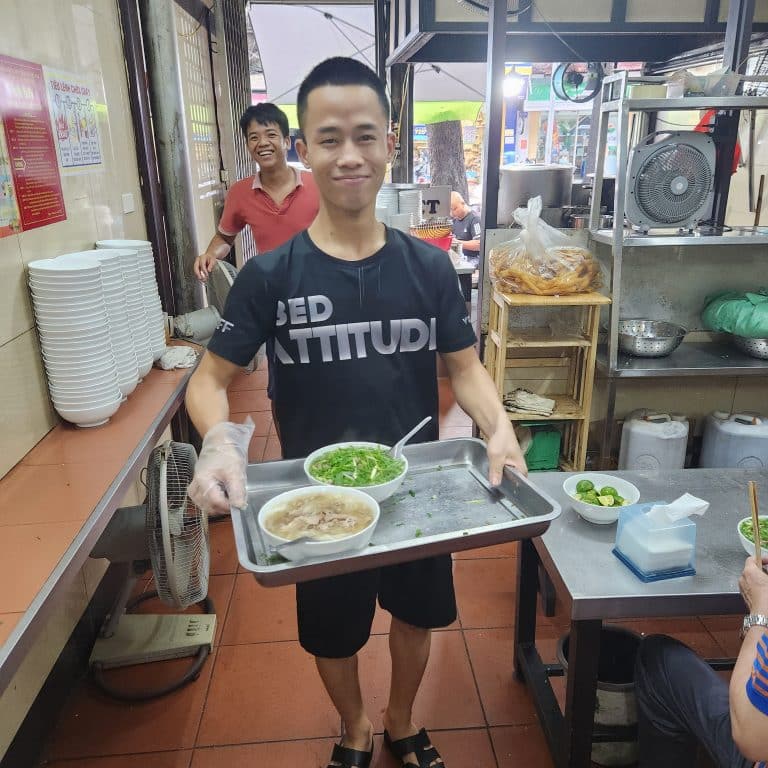
What is in Pho?
The exact ingredients in pho differ based on region and the preferences of the vendor making it, but it tends to follow a similar formula even if the ingredients can change a bit. That formula includes 4 parts:
- The broth
- The noodles
- The meat
- The aromatics
The broth
Pho broth has a rich umami flavor thanks to the beef bone broth used in its preparation. Some Vietnamese food restaurants and street vendors offer vegetarian versions of pho (phở chay) and it replaces the bone broth with vegetable broth or another umami base. The richness of a well-made pho broth gives the dish a satisfying, stomach-warming flavor.
Southern pho sellers generally add a bit of sugar to the broth, while northern sellers add a touch of MSG instead.
The aromatics
To give pho broth its complex flavor profile, a variety of fresh spices are added to it before it is cooked for hours. There are many “optional” aromatics, but the five most important ones are star anise, cinnamon sticks, whole cloves, cardamom pods, and coriander seeds. By the time it’s finally ready to eat, the aromatics are mostly melted into the pho, meaning the broth retains a smooth texture while taking on subtle notes of the additions.
The noodles
Though many types of Vietnamese food use rice noodles (more on that below), the specific type of rice noodle used in pho is different than in almost any other Vietnamese food. They are almost flat and are always a uniform width – about a quarter inch wide – in traditional Vietnamese pho.
In Vietnam, almost every local market has specialized stands selling freshly-made, never-dried rice noodles, including pho noodles. These are the noodles used by pho vendors here. The noodles are made from 100% rice flour and so are both vegan and gluten-free. Supermarkets in Vietnam and abroad often sell dried pho noodles (often referred to as pad Thai noodles) or pho noodles preserved in liquid, but they can’t quite match the translucent fluffiness of the fresh version.
The meat
Originally, pho only contained beef, with flank and tendon being the most popular cuts. In 1939, chicken pho was invented and caused quite a stir in the Vietnamese food community before settling in as a staple. And as pho moved south, some additional parts of the cow, such as tripe, brisket, and meatballs combining all parts of the cow, gained popularity. You won’t find any meat other than beef or chicken used at any traditional Vietnamese pho vendor.
The main parameter of a cut of beef or chicken used in pho is that it is easy to chew. In the case of beef, that means the meat should be sliced very thin. That also helps with the cooking process – pho beef is usually not completely cooked before it is added to the boiling broth, so the cooking process finishes in the bowl and the meat is as fresh as possible. This doesn’t really apply to chicken, which needs to be cooked first and doesn’t have to be sliced as thin since it’s an easier meat to chew.
On the side
As mentioned above, the sides for pho really differ by region.
In the North, pho vendors typically include quay (pronounced the same as “why”), also known as chinese donut. The quay comes on a dish on the side like breadsticks, and you can dip it into the broth to soak up that savory goodness.
In the south, pho sellers supply a complimentary plate of fresh leafy vegetables and bean sprouts that you can add to the pho for flavor or dip into the broth and eat as a sort of deconstructed salad. The vegetables, which often include bean sprouts, lettuce, and more, are healthy and can make the dish’s texture more interesting.
Southern vendors also throw in a selection of sauces, some of them natural (like ground up chili paste), some of them factory-made (like hoisin sauce or sweet chili sauce), and some in between (like fish sauce). You can use the sauces at your discretion to flavor the pho to your taste v.
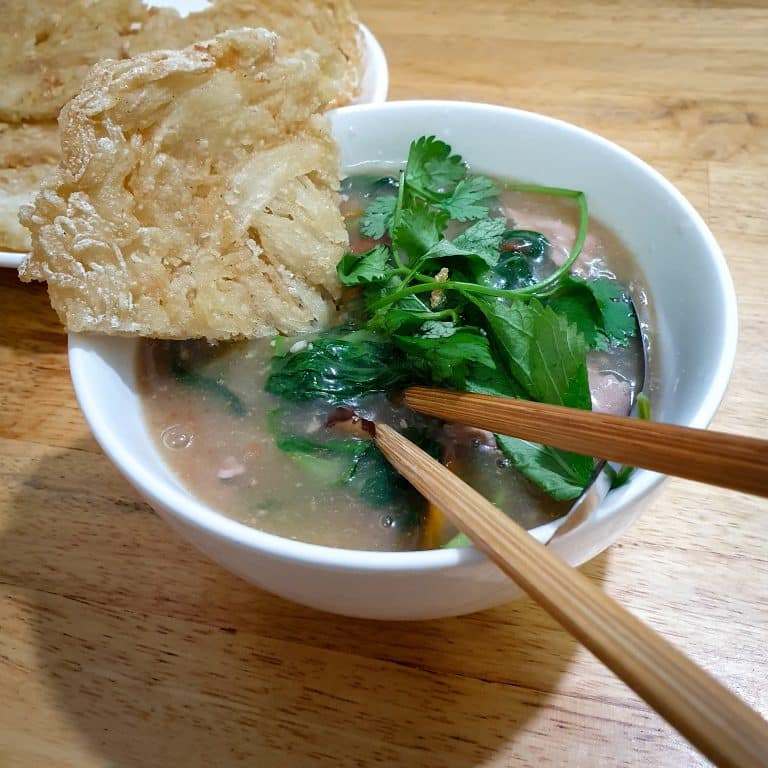
The Benefits of pho
Besides being readily available throughout Vietnam and, perhaps because of that high demand, extremely affordable, pho has a lot of benefits for your health. A few of the most notable ones are:
It's Hydrating
Pho is full of both water and salt, the two most important things for hydration. It’s perfect for a tropical climate where you’ll almost certainly be sweating all the time, because pho broth is almost a direct replacement for all the H20 and sodium you’ll be losing out of your pores at all times.
This point is especially important for cross-country motorbike travelers in Vietnam, who often spend hours on end in the sweltering heat and humidity. Remember to drink a lot of water and eat a lot of pho (or another broth-based dish like bun bo Hue)!
It's Low in Calories
Pho’s savory flavor makes it quite filling, but the calorie count of the dish is relatively low. It’s no wonder Vietnam’s obesity rate is among the lowest in the world; the traditional Vietnamese food is very low on empty carbs or fats.
If you want to make your pho experience as low-calorie as possible, go for chicken pho (pho ga) instead of beef pho (pho bo).
It's Nutrient Rich
Almost every part of pho – the bone broth, the hints of aromatics like ginger, the fresh meat, the vegetables, even the fish sauce – contains micronutrients and antioxidants that will aid in digestive support and support of the immune system.
It's Comforting
Many Vietnamese cite pho as their comfort food, and you’ll understand why as soon as you taste a well-made bowl of it. When made properly, it has an indescribably comforting feeling, like wrapping yourself (and especially your taste buds) in a warm blanket. Anytime you’re feeling down or confused, tucking into a good bowl of pho will more than likely sweep your problems away in a rush of savory, salty, all-in-all delicious flavor.
Now that you know all about pho and how to find the best bowls, you’re sure to eat better no matter where you are in Vietnam. After all, it’s everywhere here!
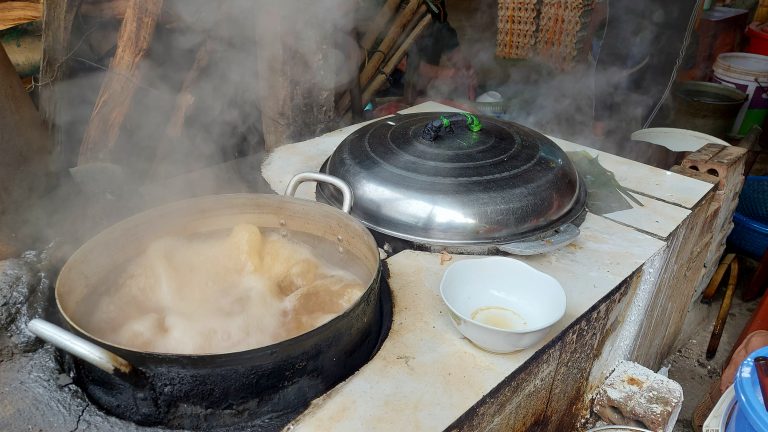
Why it's hard to find good Pho?
These days, there are few vendors (especially in the less-traditional South of the country) that really spend the hours upon hours it takes to prepare pho properly. Tasty pho does still exist, but it’s not as common as it once was.
Luckily, Vietnamese food connoisseurs can generally tell if pho is made with care by looking at the broth, which most good pho places will leave out on display where the customers can see it.
The best pho broth will have a dark caramel color but will still be clear. A cloudy or murky broth probably means the herbs and aromatics within were not cooked for long enough to dissolve completely or that rice flour from improperly cooked noodles is diluting the broth, and a yellowish broth means not enough flavorings were used in the first place. A few oil droplets in the broth is a good thing, though, because they likely mean a good amount of bone broth was used.
As long as the broth is well-made, the pho will almost certainly be delicious.
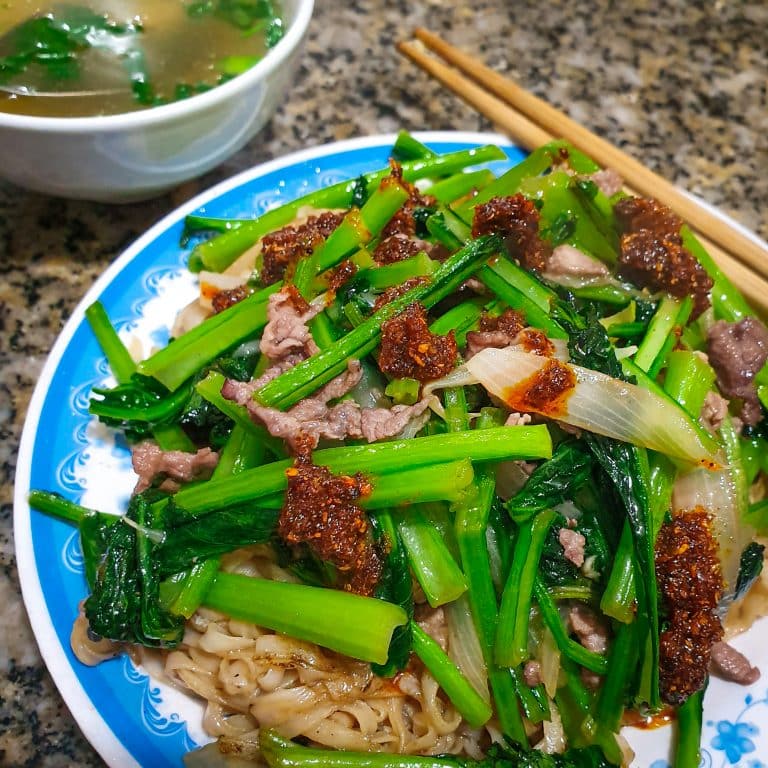
Dishes similar to Pho
If you can’t find good pho in the area you find yourself or if the dish just isn’t your thing, there’s tons of traditional Vietnamese dishes that have the same “noodle soup dish” formula as pho – that is, rice noodles and broth. The flavor of the broth and the type of rice noodle used are quite different, though. The table below lists a few of the most popular “noodle soup dishes” in Vietnam and in which part of the country they’re most famous and, often, made best.
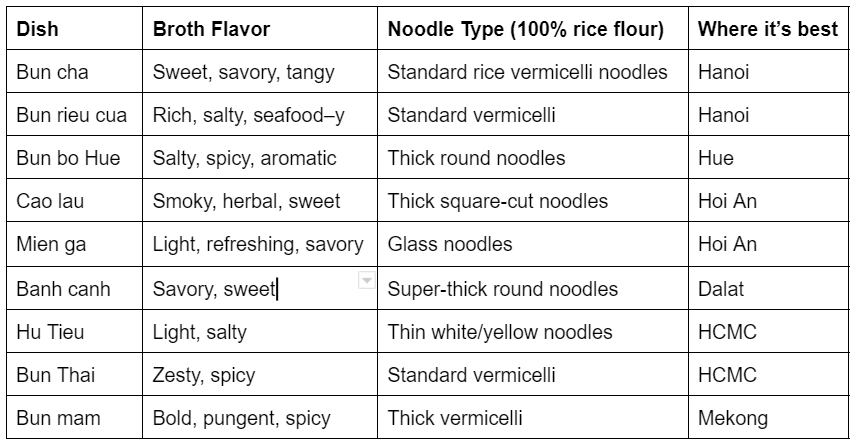
As a rule, the “noodle soup” recipes from Northern Vietnamese cuisine tend to have lighter, more elegant flavors using fish sauce as the main flavor agent, and the flavors tend to grow bolder as you travel South.
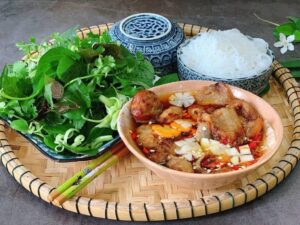
Now that you know all about pho and how to find the best bowls, you’re sure to eat better no matter where you are in Vietnam. After all, it’s everywhere here!
